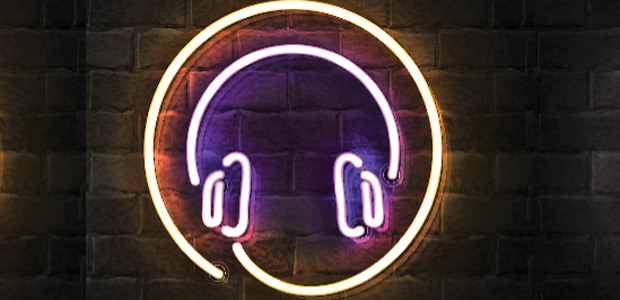
Recording a podcast
In part one, we discussed the key planning phase for your podcast including the all-important name, format and topic. In this article we’re going to take a look at the essential factors for recording your podcast, including how to produce a podcast remotely.
Recording a podcast can seem like a daunting prospect, but it doesn’t need to be. You want a credible, compelling, listenable podcast, but you shouldn’t spend countless hours trying to make it 100% perfect. Instead, focus on making the podcast engaging and interesting. Of course, you need the audio to sound good, but the right software and hardware will go a long way to help you out here, as you can iron out any audio inconsistencies and background noise in the all important edit (which we’ll tackle in part three in the series of articles).
To record a podcast, you will need a few essential pieces of equipment. You’ll need a microphone, headphones, a computer and crucially some software to edit your podcast. All of this can be purchased for less than £150.
Microphone and Headphones
Your microphone is an essential piece of equipment that helps to pick up the voices of the hosts and the guests. There are literally hundreds of microphones to choose from. It’s worth checking out reviews to see what microphone would suit you best. For some, the microphone you choose will depend on the format of your podcast.
For example, if you’re planning a roundtable discussion, you’ll want a microphone that picks up the sound all around, whereas if it’s just one person speaking, your microphone requirements will be slightly different. The Blue Yeti and Blue Snowball Ice microphones are often used for podcasting.
At the moment, the vast majority of the UK is in tier two and tier three lockdown, meaning that roundtable discussions and face-to-face meetings are off of the agenda. It’s therefore unlikely that you’ll be able to record a podcast with everyone sitting around one table and a microphone, so it’s worth each host and guest investing in a microphone that can be plugged into their computer.
As well as a microphone, you should also consider headphones. Headphones allow you to focus on the sound that you’re making without any distractions and you can also make adjustments to sound levels as you are recording. Any headphones that connect to your computer will work. In order to prevent audio leakage to the mic, you should try to keep your earphone volume turned down to a low but comfortable setting.
Recording and editing software
If you’re recording an episode with co-hosts or guests in a different location, then it’s worth checking out the recording platforms available. Over the past few months everyone has become familiar with Zoom calls, and this platform can work well for audio recording. Zencastr is a similar platform that allows guests to be recorded on separate audio files, which can help make the all-important editing process a much easier undertaking. If it’s just a solo recording, it’s worth recording straight into your editing software and pressing record.
Soundcheck
Before you hit record though, it’s essential that you complete a soundcheck. To do this, plug your headphones and your microphone into the laptop – make sure they’re both turned on (and on the right settings for your podcast). The next step is to run a quick test to ensure the audio quality. Try to position your mouth about 6cm away from the microphone and try out a few different angles to determine which position sounds best.
Once you’re happy with your setup and your guests and co-hosts have completed their own checks, you should complete one more round where you’re all on the line together. This will allow you to check any weak connections and give you the chance to iron out any other issues. Then you’re all set, and you can start to record the podcast. Remember to hit the all-important record button, whether that’s straight into your editing software, or using an audio recording platform like Zoom or Zencastr.
If possible, you want to try and record the podcast in one go, so that the audio remains consistent. If you would like to rephrase something you said, or give a different answer, try and do so within the session. Small silences, and some noises, such as a dog barking in the background can be edited out later, so don’t worry too much, but if you make a mistake, or want to try something again – then give a bit of a pause – and then try it again. This should mean that the audio quality is fairly consistent. It’s much easier to do it in one session than to constantly update the podcast with new calls and recordings later.
General considerations
As well as having the essential equipment, you need to choose somewhere to record. This needs to be a quiet space, free from distractions. Ideally you want to have a large recording space with plenty of room around you, so that your voice doesn’t bounce off of the various surfaces.
If this isn’t possible though, try to find somewhere where the surroundings can absorb the sound. As absurd as it may sound, recording underneath a blanket or duvet can do the trick. You should also have a large glass of water to hand and ready to drink if you get a dry mouth.
In the next article we’ll take a look at editing the podcast, including intro and outro music and how to use the raw audio to create a compelling, engaging podcast.
Rostrum’s podcast studio helps organisations of all shapes and sizes tell your story in podcast format. Rostrum will help with the planning, recording, production and publication of any podcasts, on any subject.

